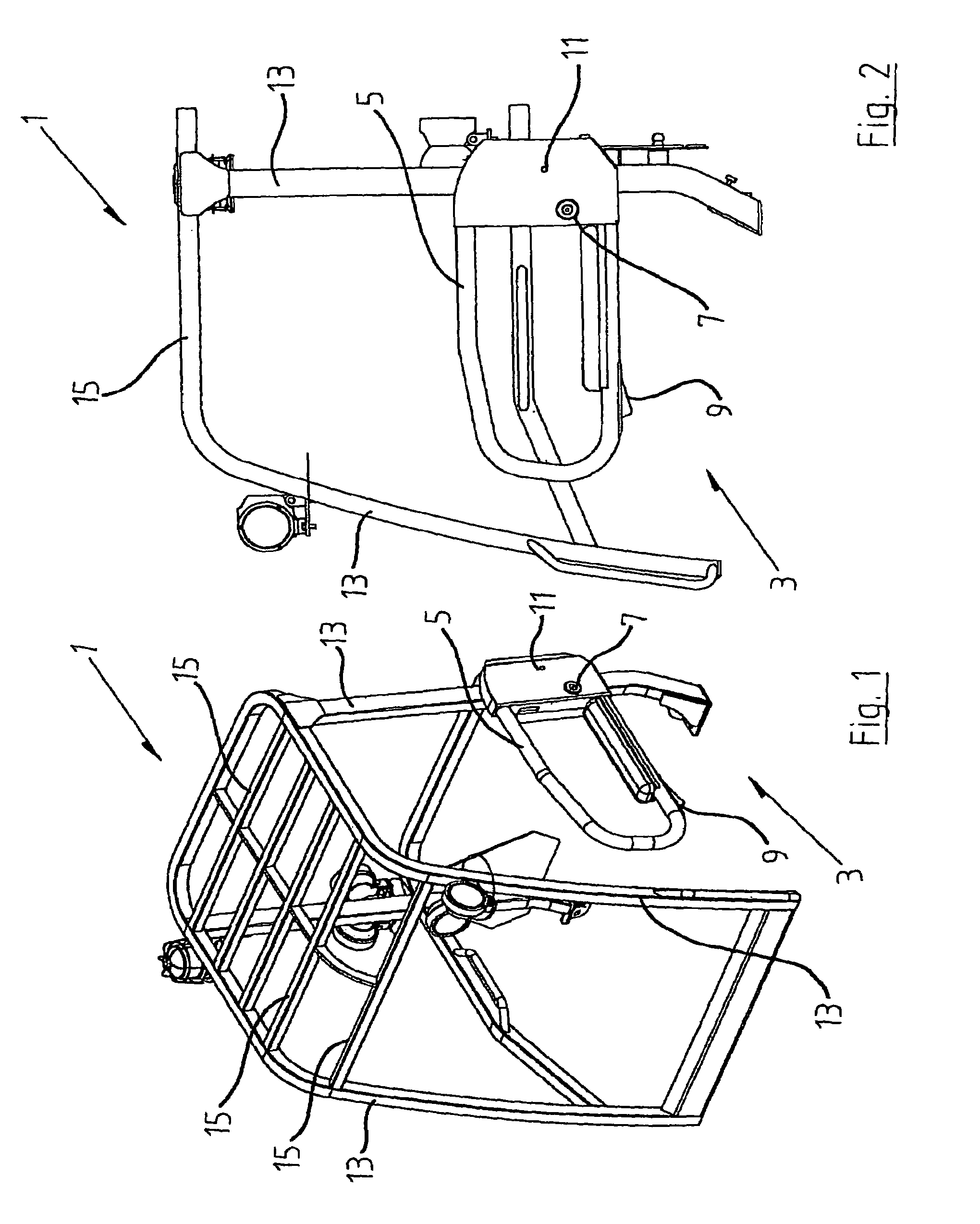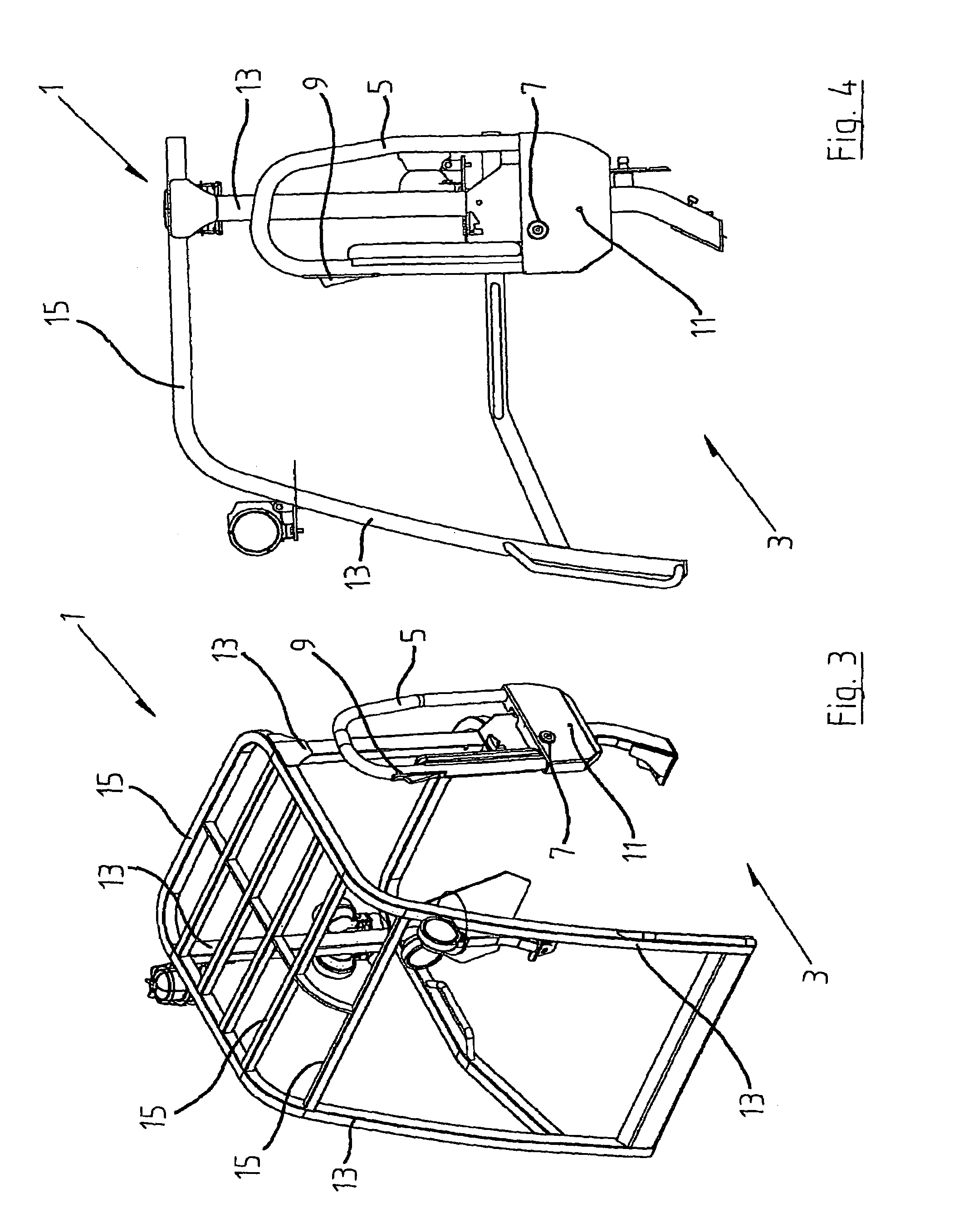Drivers cab for a load-handling vehicle
a technology for drivers and load-handling vehicles, which is applied in the direction of vehicle bodies, loading-carrying vehicle superstructures, and monocoque structures. it can solve the problems of significant damage to the door or the machinery, the danger of personnel or other machinery coming into contact with the open door, and the known types of doors. it can achieve the effect of less space, less space, and constant overall width of the machin
- Summary
- Abstract
- Description
- Claims
- Application Information
AI Technical Summary
Benefits of technology
Problems solved by technology
Method used
Image
Examples
Embodiment Construction
[0043]Referring to the drawings, and initially to FIGS. 1 to 4 inclusive, there is shown a driver's cab, indicated generally by the reference numeral 1, having an opening 3 to allow access to and from the cab and a door 5 mounted on the cab 1 and moveable to and from an open position in which the door is free of the opening (FIG. 3) and a closed position in which the door is across the opening (FIG. 1) thereby preventing access to or from the cab. The door 5 is pivotally mounted to the cab 1 about pivot pin 7 in such a manner so that the door pivots substantially in its own substantially vertical plane and does not protrude laterally outwardly from the cab when in an open position. Instead, the door pivots upwardly along its substantially vertical plane to the open position and remains in the same substantially vertical plane as in the closed position.
[0044]A locking mechanism comprising a release handle 9 and a locking pin 11 are provided on the door. The release handle 9 is operab...
PUM
 Login to View More
Login to View More Abstract
Description
Claims
Application Information
 Login to View More
Login to View More - R&D
- Intellectual Property
- Life Sciences
- Materials
- Tech Scout
- Unparalleled Data Quality
- Higher Quality Content
- 60% Fewer Hallucinations
Browse by: Latest US Patents, China's latest patents, Technical Efficacy Thesaurus, Application Domain, Technology Topic, Popular Technical Reports.
© 2025 PatSnap. All rights reserved.Legal|Privacy policy|Modern Slavery Act Transparency Statement|Sitemap|About US| Contact US: help@patsnap.com



